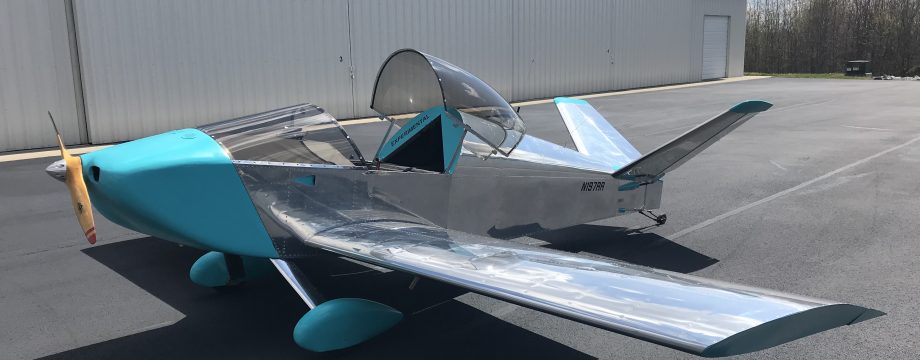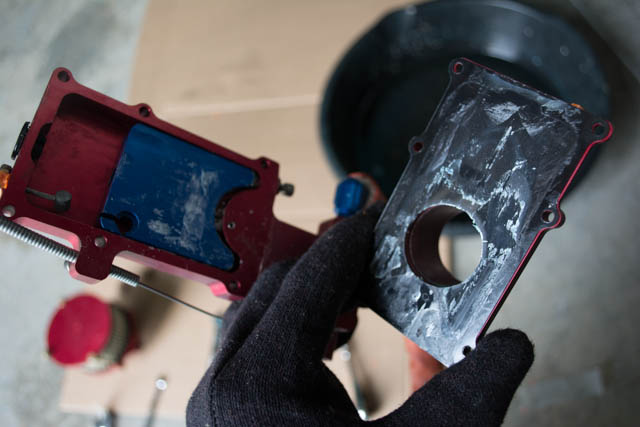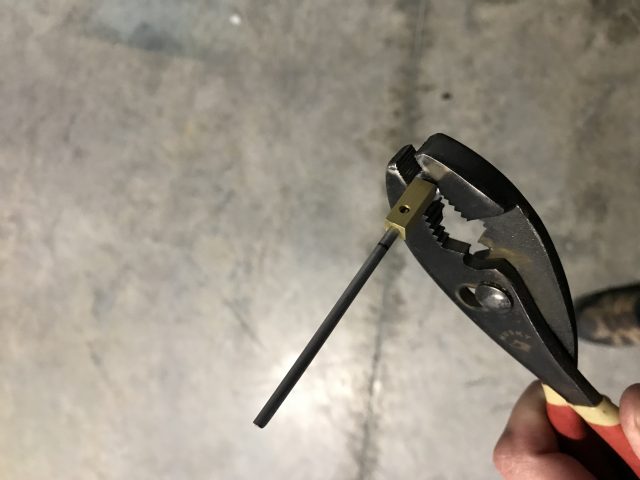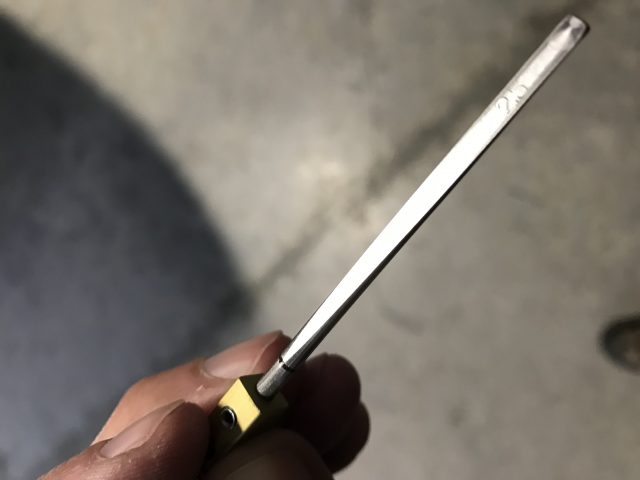Total Build Time: 1347 Hours
When I came to the plane today, among other things, I did an engine test run and things seemed to be normal. A few hours later I was beginning to wrap things up at the hangar, and happened to do a random check of the freedom of the throttle lever (I had apparently bumped the lever “open” while working.) When I went to pull the throttle to idle (which pushes on the cable to close the carb slide), there was enough resistance in the carb or cable that it actually bent the cable at the throttle lever. So now I had 2 problems. 1) Something was causing excessive resistance in the throttle operation and 2) I just ruined my throttle cable.
I decided to start my troubleshooting by removing the carb, which is where I found this:
It was a waxy blue residue (the fuel dye maybe?) that thoroughly coated the inside of the injector. It cleaned/wiped off easily with acetone. The engine ran fine earlier that day, but I hadn’t run it in a month or so previously and it was a very cold day. It almost seems like it got soft with running, then firmed back up a couple hours after shutdown to the point that it bent my throttle cable when I went to close the throttle at the end of my day at the shop (had bumped it open at some point.)
It was soft/waxy, but not hard enough to chip, just smear. In case it’s not clear from the photo, the residue was very much blue, like the dye in 100LL. It wasn’t hard to remove with a rag and some acetone.
I inspected my gascolator as well and the inside of it was clean, including the filter. The engine was running fine, and I never would have had a clue about this residue if it hadn’t made the carb stick enough to make my throttle cable kink. I have since drained all fuel in the tank and lines and replaced with fresh fuel.
I replaced the throttle cable with 0.075″ diameter high carbon “piano wire” which is approved by the Aeroinjector manual. This replaces my bent braided steel wire that was provided in the kit.
I thoroughly cleaned the carb and re-inserted the mixer needle, but I did not visually verify the needle’s position after setting the lock screw. My engine was performing very poorly after cleaning the carb, especially at low power settings, constantly dying. I had re-inserted the needle by counting the revolutions of the set screw when I removed/reinstalled it.
However, after removing the air filter, marking the needle, then removing the needle, I found that it had been set far too lean. I then slightly deformed the threads in the screw for the needle so the screw could not freely turn when setting the set-screw.
I marked the needle per the Aeroconversions instructions, and re-inserted it, visually verified it’s position with the air filter removed, attached the air filter and had an excellent test run.
I have now learned to always visually verify the position of the needle when re-inserting it (removing the air filter is an easy way to do this), and by deforming the threads slightly on the screw for the needle, I can now be confident that the needle’s position will not vary while setting the set-screw. I have also added a thorough cleaning of the Aeroinjector to my Condition Inspection checklist.





You didn’t say how many hours you had on it when it happened. I had the same thing happen in a runup in the first few hours, before it flew. Only I didn’t know the wire kinked and the engine started wide open. I wasn’t quick enough and the plane accelerated too fast and it cost me a prop in a snow bank. I suspect the sticky stuff is coming from the inside of the intake pipe. I did not clean mine and I’m familiar with tube benders. They use a lubricated mandrel inside the pipe when bending to prevent distortion in the bend. I think the gasoline is diluting the stuff and it’s running down onto the top of the slide. At that time Sonex provided a larger dis. flexible cable. There should be an instruction to clean the manifold like a gun.
Hi Maurice… total run time on the engine prior to the sticky carb would have been under 1 hour total of ground running (but over a year since first start.) I believe other factors were the age of the fuel in the tank and the length time the engine had sat prior to the runup that day. Combined with your theory about old lubricant in the intake pipe, any/all of these factors probably contributed.